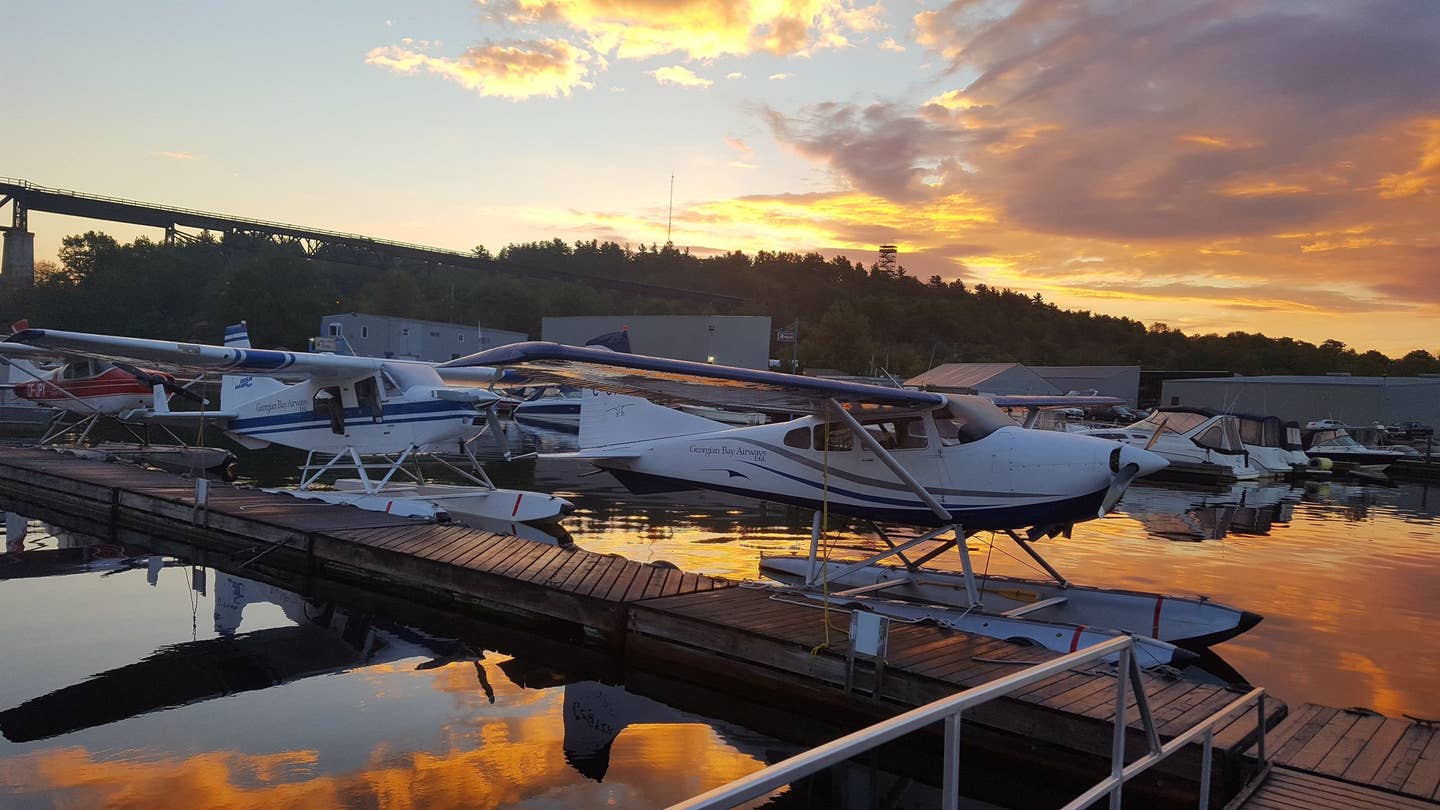
Floatplanes are staples of North American bush operations. Georgian Bay Airways
Bush pilots operate in remote areas worldwide with little operational support. Career success and survival require excellent backcountry flying skills, self-reliance and resourcefulness, and above all, the right attitude, say bush pilots Glen Ferguson and Keith Saulnier. They represent the two bush-pilot career paths you might consider: missionary aviation and commercial operations.
Saulnier owns Georgian Bay Airways in Parry Sound, Ontario, which offers a Career Bush Pilot Program, and Ferguson is CEO of the International Association of Missionary Aviation (IAMA), whose 60-some member organizations include mission-aviation fellowships and colleges with mission-aviation programs. Here are their tips for becoming a bush pilot.
What Aircraft Do Bush Pilots Fly?
The commercial fleet ranges from Piper Cubs through Cessna Caravans (with many on floats), along with vintage de Havilland Beavers and piston and turbine Otters. Taildraggers are widely used.
Missionary aviation "is moving to turbine aircraft" because of the declining availability of avgas, says Ferguson. This means you'll find more Quest Kodiaks, Pilatus Porters and PC-12s, and Caravans. "When airstrips get too short, then we put in helicopters."
Bush Pilot Training and Requirements
Missionary aviation typically requires a minimum of 500 hours of flight experience, commercial and instrument pilot's certificates, and a high-performance endorsement, as well as an A&P license. With the mission fleet moving to heavier, tricycle-gear aircraft, a tailwheel endorsement is no longer mandatory.
Requirements among commercial operators vary, but include a commercial pilot license and an endorsement or rating in whatever type of platform you'll operate--and experience flying in the area you'll be working.
Where is Bush Pilot Training Available?
Commercial bush-pilot training is available through flight-training facilities offering instruction in float, tailwheel, tundra tire, or ski and glacier operations, in a number of locations around North America. U.S. pilots trained and certified in Canada can receive FAA approval through a Foreign License Validation Certificate (FLVC).
More than a dozen colleges and universities have ab initio mission-aviation programs. To help offset the high program costs, schools are investigating a forgivable loan-assistance program that writes off part of the loan for each year flying overseas, Ferguson says.
How Do Bush Pilots Get Hired?
"You have to start at an entry-level position, and in the bush that usually entails a lot of loading and unloading of airplanes," says Saulnier. "Very rarely will people jump into the left seat in a medium-size aircraft in any category." Additional practical skills enhance a pilot's employability. "If you're a wrench [an A&P], a plumber or an electrician, or a computer programmer who can help put up a website or post content on social media, you'll make a better [job] candidate," Saulnier says. Clearly, any skills that contribute to the greater good of working in a remote location can advance a pilot's resume.
Missionary-aviation organizations conduct 10-day technical-evaluation courses to determine an applicant's piloting and mechanic skills—and attitude. "You don't want the bad apple who only wants to fly airplanes," said Ferguson. "They [pilots] need to plug in to the bigger mission." Those accepted will return for orientation and to polish their skills before posting overseas.
What are the Duties of a Bush Pilot?
Missionary aviators support a broad range of faith-based objectives that often involve helping isolated people in remote locations. Pilots and A&Ps operate under duty limits, including hours and days off. They may serve in their assigned location for four years and take one year off. "Then most people go back to the same place or move on to somewhere else, and spend another four years on location," Ferguson said.
Commercial bush pilots perform "a lot of camp work" which includes hauling supplies and people to remote sites. Work might support tourism, resource industries or public agencies, and it can be seasonal.
How Much Do Bush Pilots Make?
Salaries for commercial bush pilots vary widely, depending on the company, the job, and the degree of hazard. A starting bush pilot salary might be $2,500 per month, while more seasoned pilots operating larger airplanes can earn $6,000 to $8,000 per month or more, Saulnier says. Average mean wage for commercial pilots of nonscheduled operators is about $85,000, according to the Bureau of Labor Statistics. Missionary pilots fund their own expenses and salary, an amount typically ranging between $4,000 and $6,000 per month, through self-developed donor networks.
What are the Additional Benefits?
"For me it's when I see changed lives," says Ferguson.
Adds Saulnier: "Absolute freedom. There's still romance associated with our side of the aviation industry."
Add in the opportunity to fly close to nature's glory, and a truly unique aviation career awaits the pilot who seeks it.
Learn more about bush pilot training and careers here and here. Also, contact the Recreational Aviation Foundation for more information on flying in the backcountry.

Sign-up for newsletters & special offers!
Get the latest FLYING stories & special offers delivered directly to your inbox






